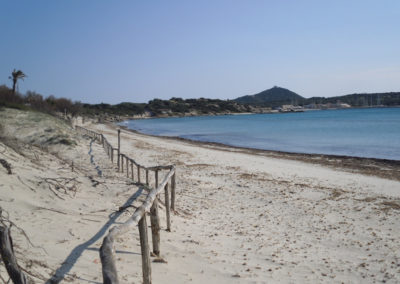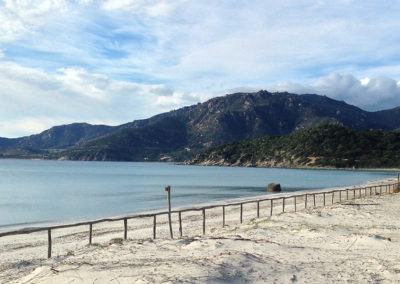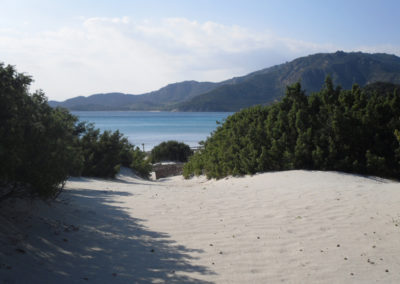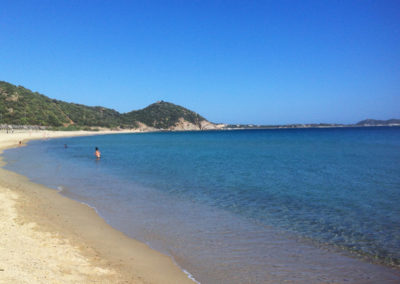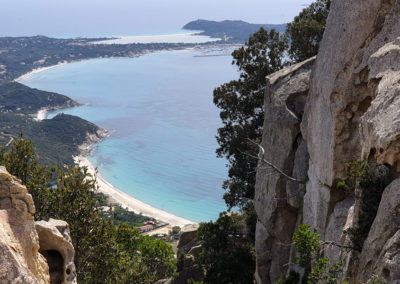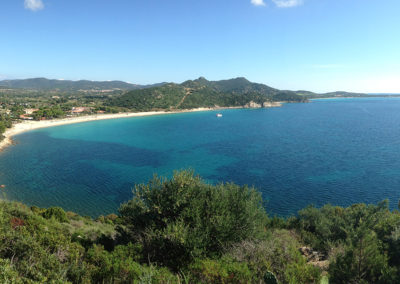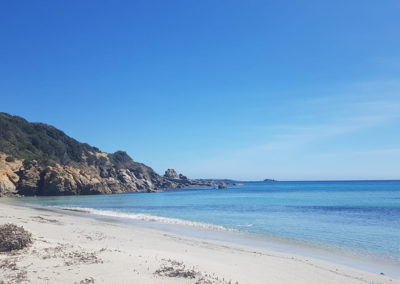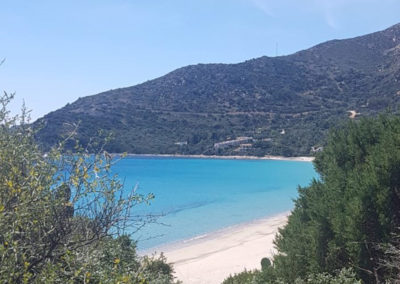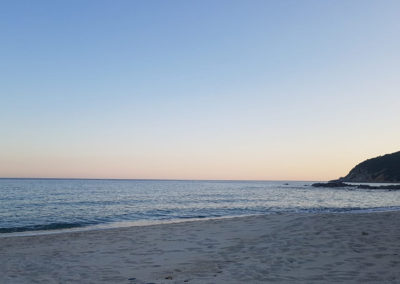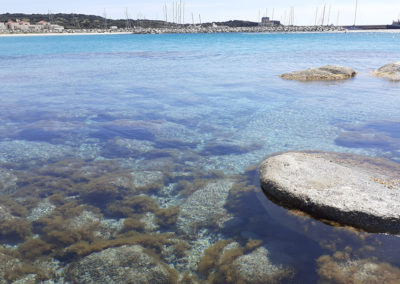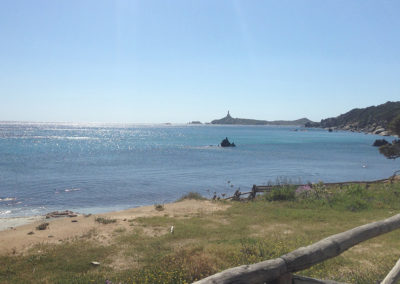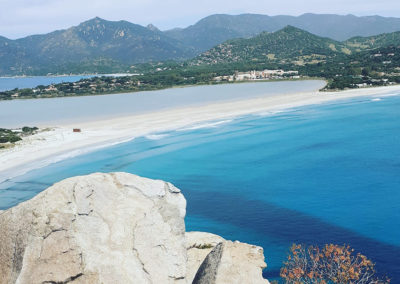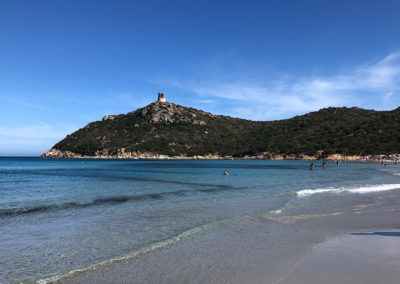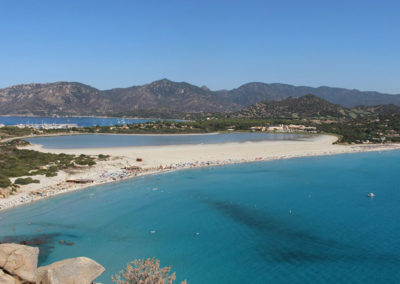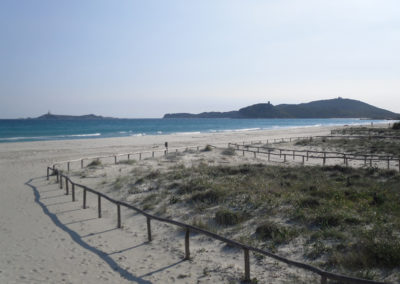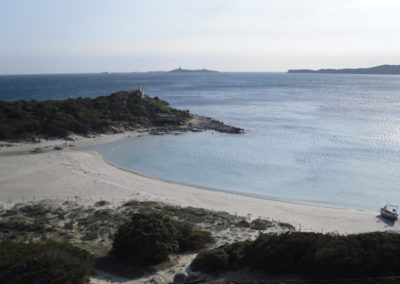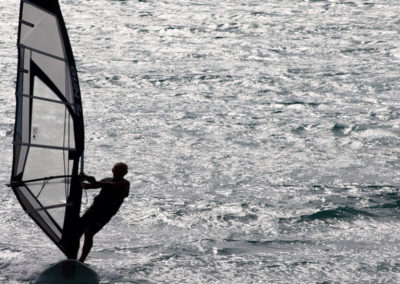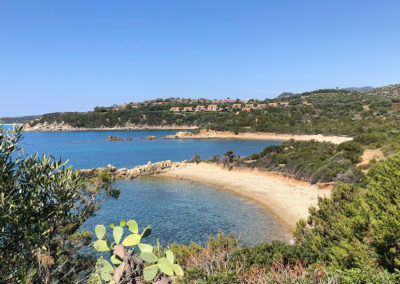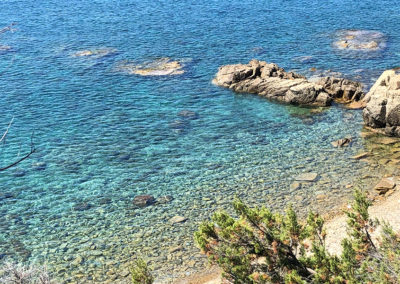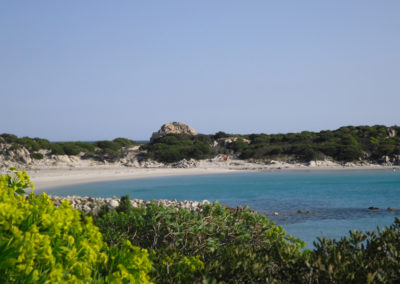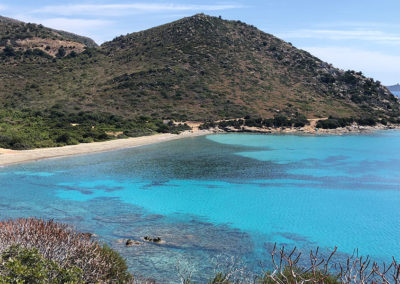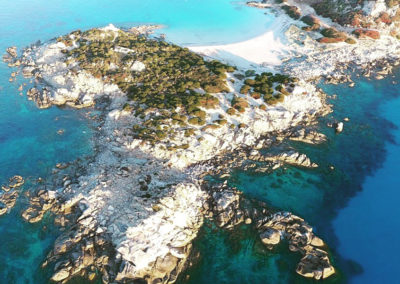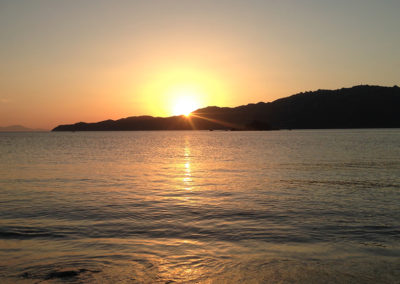THE TERRITORY
Villasimius, South Sardinia
More than 20 beaches
Excursions
History and Culture
Marine Park
Villasimius is located in the south-eastern area of Sardinia in the area that has been part of the Marine Protected Area of Capo Carbonara since 1998.
Thanks to this favorable position it can enjoy the typical Mediterranean climate with mild winters and hot summers. Extreme summer values just exceed 40 °C. The enchanting and uncontaminated views make it among the most sought after destinations in Sardinia for a holiday dedicated to the sea and relaxation.
The route to reach Villasimius from Cagliari, which is about 50km away, already promises to be fascinating and evocative. Heading towards the east coast, you take the road that runs along the Poetto on the right, the large beach of the Cagliari people about 7 km long and on the left the Molentargius pond which until 1985 was used for the collection of salt. Continuing along the panoramic coastal road, we gradually encounter the beaches of Cala Regina, Cala ‘e Moru, Geremeas, Genn ‘e Mari and Solanas, the last before immersing ourselves in the Marine Protected Area of Capo Carbonara, which extends from Capo Boi to almost to the beach of Cala Pira.
“Sardinia is characterized by fantastic coasts with clear, crystalline waters, mainly due to the intensity of the winds that often cross it from all directions. The fortunate naturalistic configuration of the Villasimius marine park, which includes around 20 mainly sandy beaches, allows you to choose, from time to time, which of these to spend the day on depending on the wind that blows.”
From the Capo Boi promontory we enter the district of the municipality of Villasimius and from here we find all the beaches that are located along the coast towards Costa Rei.
Below are the best known and where it is certainly mandatory to take at least one swim: Porto Sa Ruxi is outlined by three small coves of rocks and light sand surrounded by dense and thriving Mediterranean scrub.
Campus rather wide beach with slightly dark and coarse sand with medium depth seabed.
Cuccureddus is a beach whose main access is private but can be reached by sea or by taking a land route across the rocks; it is characterized by fine, light sand and the seabed is of medium-high depth.
Campulongu looks like a beach of very fine light sand, which develops in length rather than width, with such a shallow seabed that, depending on the currents, it can create a real child-proof swimming pool. Obligatory photo!!
The Rice Beach, so called because once upon a time – unfortunately in the past – the grain of the sand was really similar to grains of rice. Following the construction and expansion of the tourist port pier, the natural exposure of the beach to sea currents has changed, resulting in an almost total erosion of the beach.
Porto Giunco is a very long beach of fine, clear sand, with always clear water and shallow seabed. The 16th century Spanish Tower makes the view towards the sea characteristic, while behind it the numerous colony of pink flamingos present in the Notteri Pond makes the stop on the beach even more evocative: it is in fact not difficult to witness the flight of the flamingos at sunset evening.
Simius Beach is the closest to the town – from which it is in fact about 1.5 km away – and is characterized by light, fine-grained sand and a seabed of medium depth.
Porto Giunco
Simius
Punta molentis is the undisputed pearl of the area. Also known as the “beach of the two seas”, it is configured as an isthmus whose two sides, exposed respectively to the south and to the north, take on very different aspects: the bay to the south is characterized by very fine sand, crystal clear water and rather shallow seabed, while the side facing north gradually takes on a rocky conformation, which overlooks a high seabed. A day on this beach, in the company of an excellent fried calamari and a glass of frozen Vermentino from the fishermen’s restaurant, will repay you for the wait due to the limitation of access: the entrance is in fact limited; max 200 cars per day in the months of June, July, August and September.
From the tourist Port it will be possible to visit the Marine Park, taking advantage of a series of services offered by various tour operators: you can choose between daily or half-day excursions, the fascinating experience of fishing-tourism, sporting outings for snorkelling or, for the more experienced, diving. It is also possible, in complete autonomy, to rent a dinghy even without a license.
For those who want to spend time away from the beaches, there is also the possibility of taking splendid horseback rides along the coast, or by bicycle or quad; and again, playing golf and doing outdoor sports.
Not to forget some historical-cultural attractions of the area: the Old Fortress, adjacent to the tourist port, is a 14th century building which played the role of guard and defense of the area, now used as a museum; in the center of the town there are the archaeological Museum, which collects the evidence of antiquity found in the area, is fascinating Casa Todde, which houses the Maritime Museum.
If you have the opportunity to be in Villasimius in certain periods, you will be able to attend some particularly interesting events, such as that of the third Sunday of July for the sea procession to the Isola dei Cavoli: the festival of Madonna del Naufrago in which the wreath of flowers is placed on the submerged statue of the Virgin and Child, created by the contemporary sculptor Pinuccio Sciola. In the first week of September, however, the feast of Santa Maria is celebrated with performances by folk groups and a parade of decorated floats; October 24th is then the turn of the homage to San Raffaele Arcangelo, which includes fireworks displays, traditional songs and dances.
Evening life in the center of Villasimius is characterized by a long walk in the main street with shops and clubs open until late at night, street artists, live music; there is no shortage of ice cream parlors, restaurants and pizzerias.

